Did you know LED lights can shine for up to 50,000 hours? That’s about 50 times longer than old-style bulbs. LEDs are changing the lighting game with their long life, energy-saving ways, and cool uses. They don’t waste energy making heat like old bulbs do. Instead, almost all their energy lights up our world. This makes them perfect for new, green lighting ideas.
LEDs can make buildings look modern with their sleek lights. They can also make our homes smarter with new LED systems. You can use LED strips in all colors to set the mood. You can even put LEDs in furniture for a cool, futuristic look. LEDs are not just for show; they’re great for reading or setting a relaxing mood. They also help make rooms look better by getting rid of unwanted shadows and glares.
النقاط الرئيسية
- LED lights can last up to 50,000 hours, significantly longer than traditional incandescent bulbs.
- تقنية LED utilizes nearly all its energy for light, minimizing heat waste.
- Advanced LED applications offer dynamic lighting solutions for both aesthetic and functional design improvements.
- LEDs provide flexibility with various color options, ideal for creating different moods in living spaces.
- Smart home LED lighting systems enhance convenience and energy efficiency.
- LEDs contribute to sustainable lighting solutions with their long عمر and high energy efficiency.
Introduction to LED Technology
LED stands for Light Emitting Diode. It works when electrons move through a special material, making light. Today, LEDs are a big deal in lighting because they are versatile and efficient.
What is LED Technology?
LEDs work through electroluminescence. This means electrons pass through a material and light up. They are great for saving energy and can be used in many ways. They’re more efficient than old bulbs because they turn more energy into light.
Historical Evolution of LED Lighting
LEDs have been around since the early 1900s. The first one was made in 1927. Big achievements in the 1960s made them ready for the market. Companies like Texas Instruments and HP played a big role.
Initially, LEDs were just small indicator lights. But over time, they’ve transformed into powerful lights for everything from homes to outdoor spaces. Their growth comes from better tech, efficiency, and colors.
| وجه | الكفاءة | Color Range | Lifespan |
|---|---|---|---|
| LEDs | 90% more efficient | Wide range (white, blue, green, red, etc.) | Long, with decreasing light output by 30% |
| Incandescent Bulbs | Releases 90% energy as heat | Limited to warm colors | Short, burns out quickly |
| Fluorescent Lamps | Moderate efficiency | Limited range, mainly cool and warm white | Moderate, with gradual dimming |
LEDs have come a long way from being small lights to advanced systems. Thanks to constant innovation, they are now better than many traditional lights in several ways.
The Semiconductor Principle Behind LEDs
The core idea of LEDs is electroluminescence. This happens when an electric current passes through a LED’s material, causing it to emit light. It’s a smart way to convert energy directly into light, not wasting much on heat. This makes LEDs a top choice for saving energy in many areas.
![]()
LEDs have an interesting story, starting in 1927 with Russian inventor Oleg Losev making the first one. But, they weren’t widely used until 1962. That’s when Texas Instruments put out the first LED product for sale.
After that, visible light LEDs came about in the 1960s. Nick Holonyak was key, showing off a semiconductor laser that worked in visible light in 1962. Then, in 1972, M. George Craford made the first yellow LED. This move made red and red-orange LEDs much brighter.
How do LEDs work? They rely on electrons and holes inside their material. Applying voltage makes electrons jump across, meeting holes and creating light. This interaction is what we call electroluminescence, the heart of تقنية LED.
Comparing LEDs to old-school lights shows why they’re better:
| وجه | LEDs | Incandescent Bulbs |
|---|---|---|
| كفاءة الطاقة | High, due to efficient electroluminescence | Low, most energy lost as heat |
| Lifespan | Up to 100,000 hours | Approximately 1,000 hours |
| استهلاك الطاقة | 10-25 watts | 50-150 watts |
| Maintenance Costs | Low due to long lifespan | High due to frequent replacements |
| التطبيقات | Traffic lights, automotive lights, indicators, etc. | General lighting, less specialized applications |
Thanks to being so efficient, LEDs are now everywhere. In the U.S., about 10 percent of red traffic lights now use LEDs. They are chosen for their energy savings and lower costs over time.
LEDs often use a special material called aluminum-gallium-arsenide (AlGaAs). They have N-type parts with extra electrons, and P-type parts with extra holes. When these electrons and holes meet, they produce light. This is what makes LEDs a leading technology for saving energy.
Comparing LED to Traditional Lighting
When we look at LED vs incandescent bulbs, LEDs stand out. They use at least 75% less energy. This means big savings on electricity bills. They also last up to 25 times longer than traditional bulbs.
LEDs stay cool, giving off very little heat. Incandescent bulbs, on the other hand, waste most of their energy as heat. This makes LEDs not only cheaper to run but also safer.
By 2035, LED lights will likely light up most of the U.S. They could save enough energy each year to match what 92 large power plants produce. This shows how efficient and eco-friendly LEDs are.
| Lighting Type | Wattage | Energy Consumption (kWh/year) | Lifespan (hours) |
|---|---|---|---|
| LED Bulb | 16W | 140 kWh | 15,000-50,000 |
| CFL Bulb | 25W | 216 kWh | 8,000-15,000 |
| Incandescent Bulb | 100W | 876 kWh | 750-2,000 |
The table clearly shows how LED, CFL, and incandescent bulbs differ. LED bulbs use less power and last much longer. This means fewer bulb changes and lower energy bills.
LED lighting saves a lot of money on utility bills. It can cut energy use by up to 90% compared to incandescent bulbs. This is a big plus for your wallet.
Switching to LEDs is good for both the planet and your pocket. They offer better light, less heat, and save money in the long run. LEDs are the future of smart, energy-saving lighting.
Energy Efficiency in LED Lighting
تقنية LED has changed the game in lighting. It offers amazing energy efficiency and sustainability. LEDs beat traditional lighting in many ways, helping us save money and protect the planet.
Power Consumption: LED vs Incandescent Bulbs
Switching to LED lights cuts down power use a lot. LEDs need up to 80% less electricity than old bulbs for the same light. Rogers Electric has shown that switching to LEDs saves a ton of money for businesses.
Energy Savings with High-Efficiency Diodes
LEDs work so well because of high-efficiency diodes. They turn more power into visible light than old...
You have read 27% of the article. The rest is for our community. Already a member? تسجيل الدخول
(وأيضًا لحماية المحتوى الأصلي لدينا من روبوتات الكشط)
مجتمع الابتكار العالمي
تسجيل الدخول أو التسجيل (100% مجاناً)
اطلع على بقية هذه المقالة وجميع المحتويات والأدوات الخاصة بالأعضاء فقط.
فقط المهندسون والمصنعون والمصممون والمسوقون الحقيقيون المحترفون.
لا روبوت، ولا كاره، ولا مرسل رسائل غير مرغوب فيها.
التعليمات
What is LED Technology?
LED stands for Light Emitting Diode. It’s a top-notch lighting choice that works through electron movement in semiconductor material. This process, called electroluminescence, gives off light. It means LEDs shine brighter, use less energy, and don’t get as hot compared to old-school bulbs.
How has LED lighting evolved over time?
From simple indicator lights to advanced solutions for buildings and outdoors, LED lighting has come a long way. Thanks to growth in how efficient and how well they show true colors, LEDs are now key to modern lighting.
How do LEDs compare to traditional incandescent bulbs?
LEDs beat incandescent bulbs in almost every way. They need less power and last longer without needing much upkeep. They shine brighter and stay cooler, making them a smarter and cheaper option all around.
What are the energy efficiencies associated with LED lighting?
LEDs shine when it comes to saving energy. They use way less power than old-school lights. Since they turn more energy into light and less into heat, LEDs save a lot of energy and are good for the planet.
What are the benefits of low heat emission from LEDs?
The tiny amount of heat LEDs give off is a big plus. It means they can light up sensitive spots like art galleries, museums, and showcases without harm. This keeps delicate items safe from heat damage.
How do LEDs enhance indoor design applications?
LEDs make indoor spaces look better, like with cabinet and shelf lights that boost looks and visibility. In bathrooms, they give off even light, perfect for makeup areas. Being part of smart homes, they let you control lighting easily for both looks and savings.
Why is the Color Rendering Index (CRI) important in LED lighting?
A high CRI in LEDs means colors look real and vibrant, which is super important in places like shops and restaurants. Getting colors right helps make spaces inviting and is key for tasks where seeing true colors matters a lot.
How can LEDs be used in exterior lighting applications?
Outside, LEDs light up decks, patios, and pathways, adding beauty and safety. They also power strong floodlights that keep homes and businesses safe. LEDs are versatile for outdoor needs.
What advancements have been made in architectural lighting using LEDs?
In architecture, LEDs offer both beauty and efficiency in lighting buildings. They don’t take away from the building’s look and allow custom options like colorful LEDs for eye-catching designs. LEDs have changed how buildings are lit up.
How are LEDs integrated into smart home technologies?
LEDs fit perfectly into smart homes, giving you control over lights from anywhere. They add convenience and save energy. With a tap on your phone, you can change brightness and colors, making your home just right.
What are the environmental benefits of using LED lights?
LEDs help the planet by cutting down energy use and carbon emissions. Their long lives mean less trash and thanks to recycling efforts, their environmental impact is even smaller. LEDs lead the way in green lighting.
How do LEDs offer cost-effective lighting solutions?
With LEDs, you save money in the long run thanks to their low energy use and rare need for replacements. They are a smart pick for both home use and big projects. LEDs are an investment in saving money and energy.
What makes LEDs ideal for safety and emergency lighting?
For safety and emergencies, LEDs are reliable and last a long time. They power emergency signs and lights that work even during power cuts. Their efficiency makes them a responsible choice for keeping places safe.
What factors affect the lifespan of LED lights?
The life and performance of LEDs depend on the quality of materials used, managing heat well, and strict making standards. LEDs that keep cool work better and last longer, giving off plenty of light all the while.
External Links on LED Lighting Technology
المعايير الدولية
(حرك الرابط لرؤية وصفنا للمحتوى)
مسرد المصطلحات المستخدمة
Good Manufacturing Practice (GMP): نظام يضمن إنتاج المنتجات ومراقبتها باستمرار وفقًا لمعايير الجودة، مما يقلل من المخاطر المرتبطة بإنتاج الأدوية والصناعات ذات الصلة. ويشمل إرشادات لعمليات التصنيع، وظروف المنشأة، ومؤهلات الموظفين، وممارسات التوثيق لضمان سلامة المنتج وفعاليته.







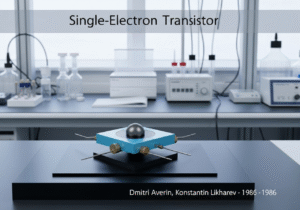
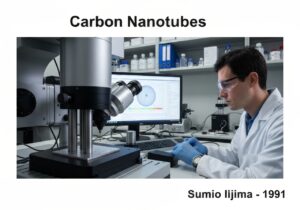





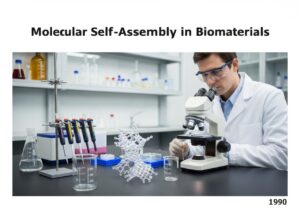
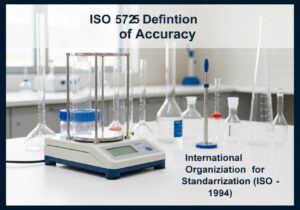









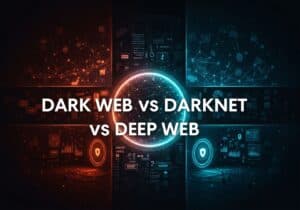
What is the most powerfull LED chip available currently?
Interesting read! But can LED technology really be energy efficient in the long run, given the rapid tech advancements?
Interesting read but dont you think LED technology is evolving too rapidly for designers to truly keep pace?
Rapid evolution is no excuse for designers to fall behind. Adapt or perish!
منشورات ذات صلة
تقييم بيئة العمل المريحة
أمر التغيير الهندسي (ECO): أفضل الممارسات لتقليل الاضطراب والتكلفة
من المختبر إلى السوق: دور مرحلة الإنتاج التجريبية
أكثر من 45 حيلة معرفية أخرى للألعاب والتسويق: النفسية والمشاركة
أكثر من 45 حيلة في العلوم المعرفية للألعاب والتسويق: النفسية والمشاركة
أحدث المنشورات وبراءات الاختراع حول الزيوليت